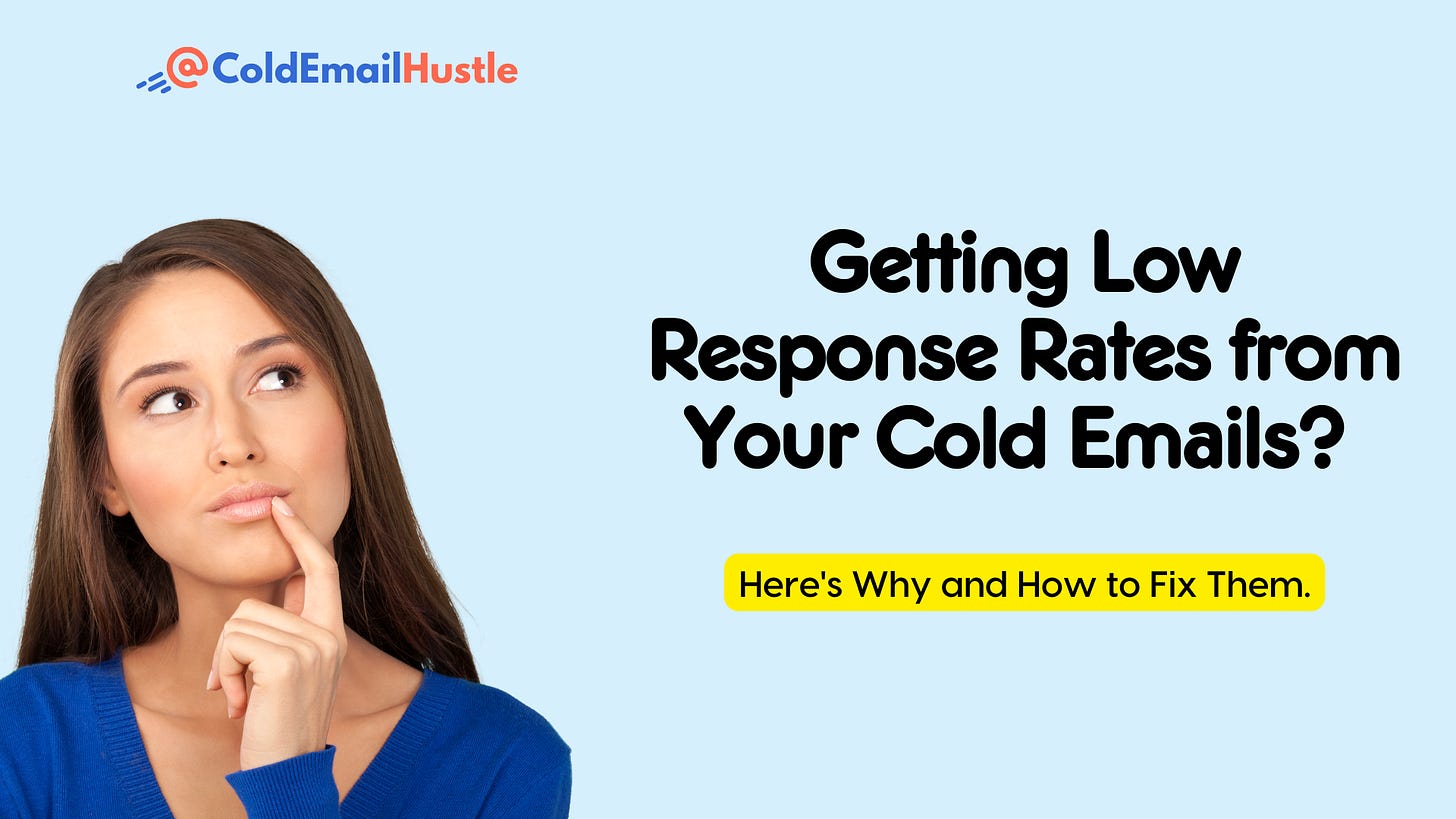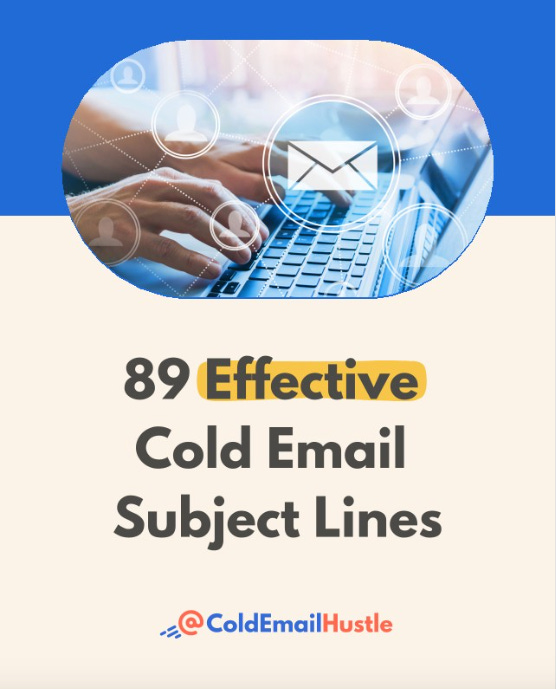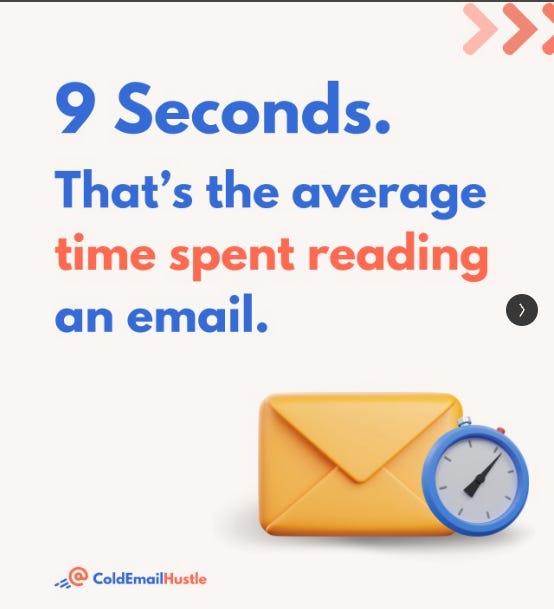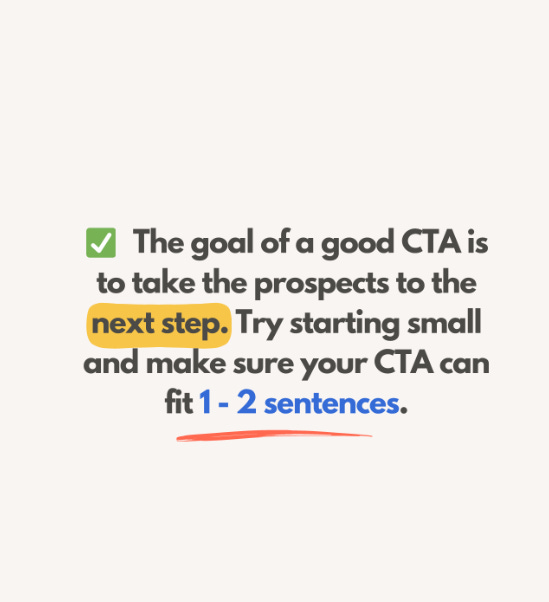Getting Low Response Rates from Your Cold Emails? Here's Why and How to Fix Them.
7-Step Troubleshooting Guide to fixing your cold email response rates
There's no sugarcoating it — cold emailing can feel like shouting into the void. You're sending out a volley of messages, but the response rates are dishearteningly low. Don't throw in the towel just yet, though. Low response rates are often a symptom of fixable missteps in your cold emailing process.
In this blog, we'll expose 7 probable culprits for your cold email woes, from an unfocused target audience to a lukewarm follow-up strategy.
More importantly, we'll guide you on how to patch up these leaks and supercharge your response rates.
Let's dive in and turn that silence into a symphony of responses.
Culprit #1 - Target Audience
⚠️ Potential Problem: You might be casting your net too wide or too inaccurately with your email list, resulting in your message landing with people who have little or no interest in what you're offering.
🧰 How to Fix it: Consider your email list as your first point of contact and make sure it's as sharp as possible. Segment it based on factors like industry, job role, or company size.
For instance, if you're selling a software solution for HR managers, segmenting your list to target only people in HR roles within certain industries or company sizes can greatly increase your response rate.
Make sure to tailor your message to each segment to increase relevance.
Culprit #2 - Email Subject Line
⚠️ Potential Problem: Your subject lines might be as uninspiring as a grey sky, deterring recipients from even opening your email.
🧰 How to Fix it: Think of your subject line as the storefront of your email — it needs to entice people to come in.
Use personalized, catchy, and curiosity-inducing phrases. A/B test different subject lines like "John, save 5 hours a week with our solution" vs. "Our solution: Your ticket to a 5-hour shorter work week, John".
Measure which one gets more opens, and refine your approach.
You can learn more about effective subject lines on our Linkedin Post on effective subject lines.
Culprit #3 - Email Content
⚠️ Potential Problem: Your email copy might be as engaging as reading the phone book, causing potential customers to lose interest or miss your point entirely.
🧰 How to Fix it: Keep your email concise and clear. It should be personalized and demonstrate you understand the recipient's needs.
Rather than focusing on features ("our software has X, Y, Z"), concentrate on benefits ("Our software can help you reduce costs by X%, save Y hours, increase Z").
Avoid hard-selling; instead, aim for a conversational tone that encourages a response.
A person spends 9 seconds on average reading an email. Don’t Waste those precious seconds!
Culprit #4 - Call-to-Action (CTA)
⚠️ Potential Problem: Your CTA might be as compelling as a flat soda, leaving prospects unsure about what to do next.
🧰 How to Fix it: Ensure your CTA stands out and is crystal clear — it should tell your prospect exactly what they should do next.
Experiment with different CTAs like "Book a Demo Now" vs. "Discover How We Can Help" to identify which ones spur the most clicks.
Culprit #5 - Email Deliverability
⚠️ Potential Problem: Your emails may be landing in the spam folder or getting blocked by email service providers.
🧰 How to Fix it: Ensure you're following best practices for email deliverability, such as:
Use a reputable email provider (GSuite, Microsoft, Zoho, or Namecheap)
Avoid using spam trigger words
Authenticate your email accounts (DKIM, DMARC, SPF records)
Consistently clean and verify your email list
Culprit #6 - Sending Frequency and Timing
⚠️ Potential Problem: You might be sending emails too frequently or at unfavorable times, resulting in lower engagement.
🧰 How to Fix it: Finding the right frequency and timing is like fine-tuning a radio — get it right, and everything comes in clear.
Test different sending schedules to find the sweet spot for your audience. Monitor your unsubscribe and spam report rates to ensure you're not overdoing it.
PRO TIP: Don’t exceed more than 50 emails per day per email account unless you have a custom SMTP setup.
Culprit #7 - Follow-up Strategy
Potential Problem: Your follow-up strategy may be inadequate or non-existent, leading to missed opportunities.
🧰 How to Fix it: Develop a follow-up strategy that includes multiple touchpoints over time. Personalize and vary the content in your follow-up emails to maintain interest and engagement.
Here are 3 Examples of proven sales cadence for cold outreach (including phone and social outreach).
Conclusion
In the end, cracking the cold email code isn't about magical incantations or secret sauces, it's about consistently applying best practices. It involves understanding and respecting your audience, crafting messages that resonate, using compelling CTAs, ensuring your emails actually reach the inbox, and following up effectively.
Remember, cold emailing is not a one-and-done deal. It's a process of continuous learning and tweaking. So, take the insights shared here, apply them to your cold email strategy, test the results, and refine your approach. With time, patience, and persistence, you can turn your cold emails from being ignored and forgotten, to anticipated and responded.
Remember, every 'no' or non-response brings you closer to the next 'yes.' So, keep emailing, keep learning, and most importantly, keep going. You've got this!







Great tips, looking forward to applying these for my campaigns